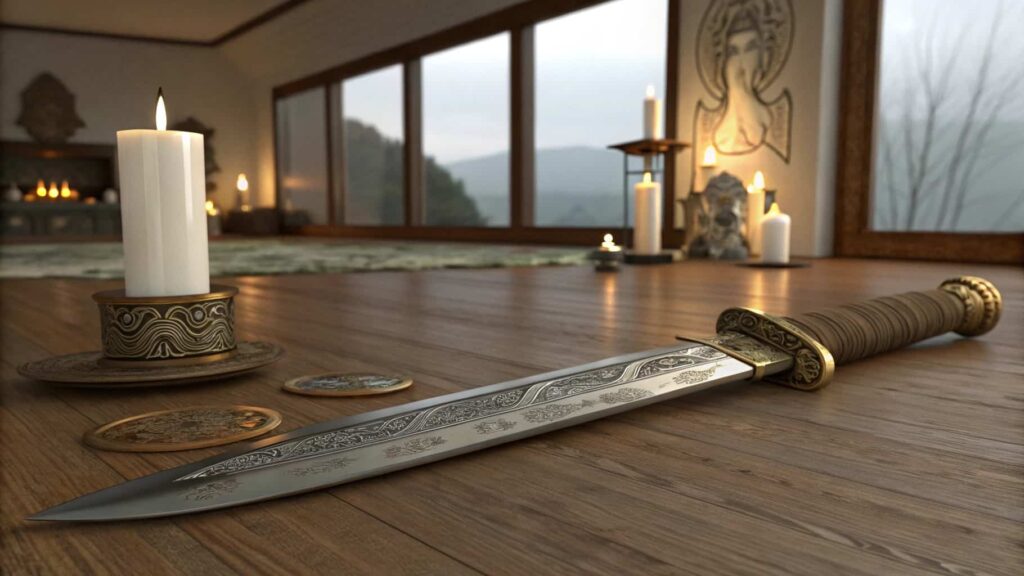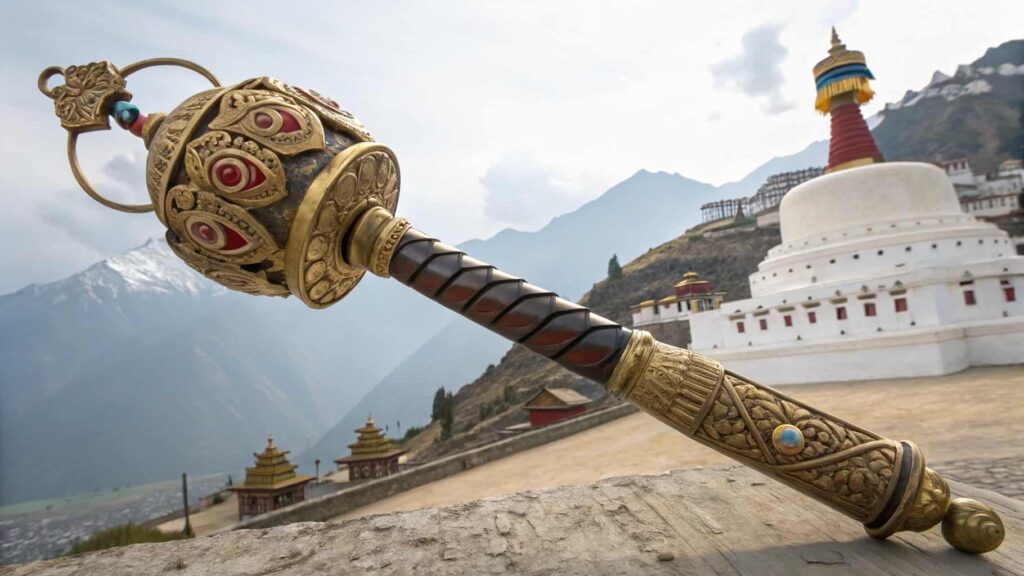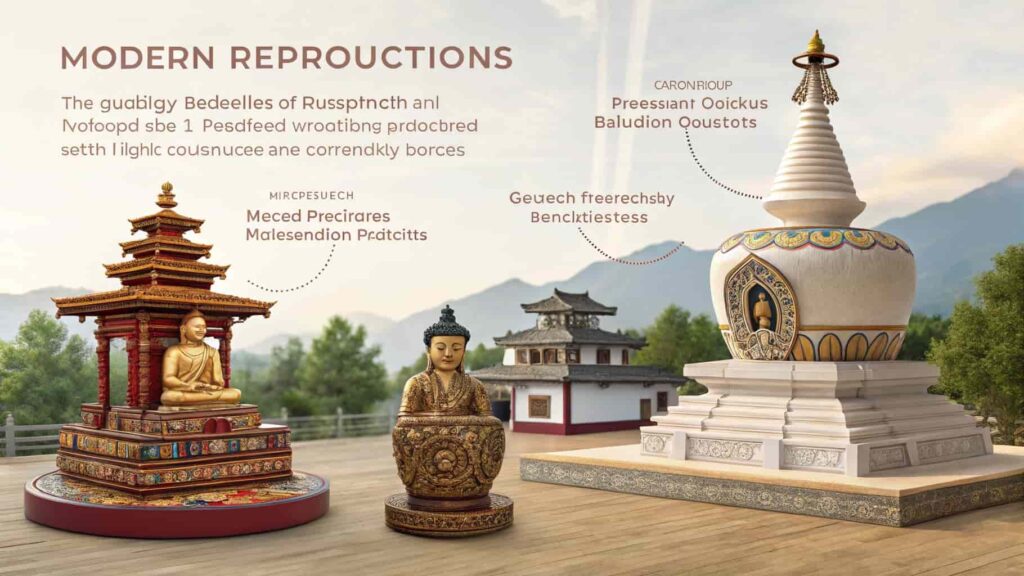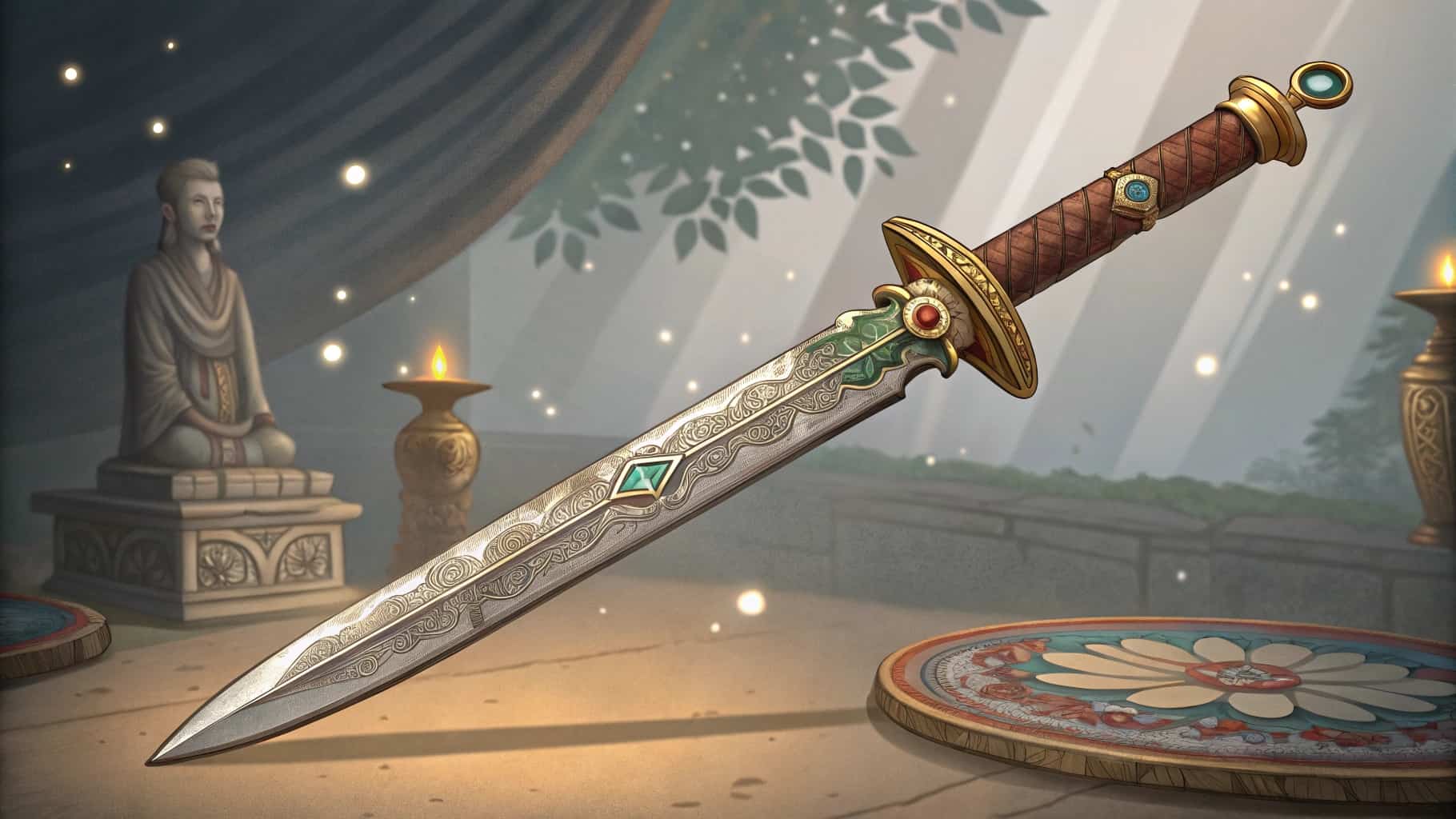The first time I held a Gugequshi, it felt both powerful and peaceful, like it carried ancient wisdom. During meditation, I imagined it cutting through my fears and doubts, and I suddenly felt more focused and clear-minded.
Gugequshi is a sacred Tibetan Buddhist dagger from the ancient Guge Kingdom, used for protection and spiritual transformation. It helps remove negativity and bring balance through special rituals. Made from unique materials, it symbolizes wisdom, strength, and positive energy.
Stay with us as we share more about Gugequshi—its history, meaning, and spiritual power. This sacred artifact has a deep connection to transformation and protection. Whether you’re curious about its origins, its role in rituals, or how it can bring positivity, we’ve got lots to talk about.
What Is Gugequshi?
Gugequshi is a special type of Tibetan Buddhist ritual dagger, known as a phurba, from the Guge Kingdom in Western Tibet. It’s not a weapon but a sacred tool used in rituals to remove negative energy, protect spaces, and aid in spiritual transformation. The dagger has a three-sided blade and often features intricate carvings of mythical creatures and deities.

It’s usually made from metal like bronze or meteoric iron and can include sacred wood or bone. Gugequshi is closely linked to powerful Buddhist figures like Vajrakilaya and is used in advanced tantric practices. Because of its deep spiritual meaning, only trained practitioners use it in rituals.
When Did The Gugequshi Style Emerge?
The Gugequshi style likely developed between the 11th and 15th centuries when the Guge Kingdom was thriving. This was a time when Buddhism was flourishing in the region, inspiring both art and spiritual practices. The Gugequshi dagger became known for its detailed craftsmanship and deep religious meaning.
It was primarily used in Buddhist rituals for protection, purification, and spiritual transformation. Over time, its unique design and purpose spread beyond Guge, influencing Buddhist traditions across Tibet. Even today, these sacred daggers are valued for their historical and spiritual importance.
What Materials Are Used To Make Gugequshi?
Gugequshi is made from metals like bronze, iron, and copper, with some even crafted from meteoric iron, believed to have special energy. Some are also made from sacred wood or human bone, symbolizing spiritual strength and the cycle of life. Precious stones like turquoise, coral, and lapis lazuli are often added for protection and good fortune.
Skilled artisans carefully craft each dagger using traditional methods to keep its spiritual power intact. These materials make the Gugequshi a powerful tool in Buddhist rituals for protection and transformation. Each one carries deep meaning and is valued in Tibetan Buddhism.
Why Do Some Gugequshi Feature A Vajra Handle?
Some Gugequshi have a vajra (dorje) handle because it symbolizes strength, wisdom, and unshakable spiritual power. The vajra represents something that can’t be broken, just like true enlightenment. It also shows the balance between wisdom and action, which helps in overcoming life’s challenges.

Adding a vajra handle makes the Gugequshi even more powerful in Buddhist rituals. It helps cut through ignorance and negative energy, clearing the path to spiritual growth. This makes the dagger a strong and meaningful tool in Tibetan Buddhism.
How Is Gugequshi Different From Other Phurbas?
- Comes from Guge Kingdom – Gugequshi is a special type of phurba from the ancient Guge Kingdom in Western Tibet.
- Beautifully Designed – It has detailed carvings of gods, mythical creatures, and sacred symbols.
- Made from Special Materials – Often crafted from rare metals, sacred wood, or even human bone for spiritual power.
- Used in Special Rituals – It is mainly used in unique Buddhist ceremonies to remove negativity and protect from harm.
- Full of Meaning – Like other phurbas, it helps in protection and transformation, but it has a unique Guge touch.
- Rare and Precious – Because of its history and craftsmanship, it is rare and highly valued in Tibetan Buddhism.
Can Anyone Use A Gugequshi?
No, not everyone can use a Gugequshi. It’s a sacred tool that requires proper training and guidance from a Buddhist teacher. Without the right knowledge, using it the wrong way can have unexpected spiritual effects. It plays an important role in Buddhist rituals, where every step has deep meaning.
Practitioners learn special techniques to use it correctly and safely. Using it without understanding can disturb its purpose and energy. It’s important to respect its spiritual power and tradition. Only those with proper initiation can truly unlock its purpose.
How Can One Distinguish An Authentic Gugequshi?
- Traditional Design – It should match the unique style of the Guge Kingdom, with detailed carvings and sacred symbols.
- Special Materials – Often made from rare materials like meteoric iron, sacred wood, or even human bone.
- Historical Background – Real Gugequshi pieces usually have a history connected to monasteries or Buddhist traditions.
- Expert Check – The best way to be sure it’s real is to have it examined by a Tibetan art expert.
- Fine Craftsmanship – Genuine ones are carefully made with precise details and traditional symbols.
- Watch for Fakes – Many copies exist, so always research and verify before buying.
What Is The Significance Of Learning About Gugequshi?
Learning about Gugequshi helps us understand Tibetan Buddhism, its rituals, and the deep meaning behind sacred objects. These daggers aren’t just tools—they represent protection, transformation, and clearing away negative energy. They also connect us to the rich history of the Guge Kingdom and its influence on Buddhist traditions.
Studying them gives us a deeper appreciation for the craftsmanship and spiritual meaning behind them. It’s a great way to see how art and spirituality come together in Tibetan culture. Plus, it teaches us important lessons about wisdom, protection, and inner growth.
Are There Modern Reproductions Of Gugequshi?
Yes, there are many modern reproductions of Gugequshi. Some are well-made and used in Buddhist rituals, while others are just decorative imitations without real spiritual meaning. Skilled artisans still craft high-quality replicas using traditional methods and materials.

However, mass-produced versions often lack the fine details and sacred energy of authentic ones. If you’re looking for a real ritual object, it’s important to research and buy from trusted sources. Consulting an expert can help distinguish a true spiritual piece from a simple replica.
FAQs:
What Is The Spiritual Purpose Of Gugequshi?
Gugequshi is a sacred Buddhist dagger used in rituals to clear negative energy, protect spaces, and support spiritual growth. It represents transformation, cleansing, and overcoming life’s challenges. Since it has deep spiritual meaning, it should only be used with proper knowledge and guidance.
Did Gugequshi Have Any Connection To The Guge Royal Family?
Yes, the rulers of the Guge Kingdom were strong believers in Buddhism and helped spread its teachings. They likely had special Gugequshi daggers made for important rituals and to protect their kingdom.These daggers were carefully crafted and held deep spiritual meaning, showing the royal family’s connection to Buddhism and their faith in its power.
Why Is It Important To Learn About Gugequshi?
Learning about Gugequshi helps us understand Tibetan Buddhism and how spiritual tools are used for protection and personal growth.It also gives us a glimpse into ancient rituals, the artistry behind these daggers, and their deep connection to faith and transformation.By studying it, we can appreciate the rich history of the Guge Kingdom and how these sacred objects continue to inspire Buddhist practices.
Does Gugequshi Have Its Own Power?
Gugequshi isn’t magical on its own—its power comes from the rituals, prayers, and the person using it. When used with the right intentions and guidance, it helps clear negative energy and spiritual obstacles. Many believe it connects them to higher spiritual forces, making it a powerful tool for protection and transformation. It’s not just an object; it’s a symbol of inner strength and positive change.
Can Gugequshi Have A Positive Impact On A Person’s Life?
Yes, Gugequshi is believed to bring spiritual protection, inner strength, and transformation. It helps practitioners overcome negativity, stay focused, and deepen their connection to Buddhist teachings. Many see it as a tool for personal growth and positive change. Some believe that keeping Gugequshi nearby can serve as a reminder to stay grounded, compassionate, and spiritually aware in daily life.
Can Someone Gift A Gugequshi To Another Person?.
Yes, but it should be given with respect and understanding of its spiritual meaning. Gugequshi isn’t just a decoration—it’s a sacred object in Tibetan Buddhism. Traditionally, teachers gift it to students as a blessing or sign of spiritual guidance. If given without knowing its purpose, it might lose its true meaning.
Conclusion:
Gugequshi is not just a ritual dagger—it holds deep spiritual meaning in Tibetan Buddhism. It comes from the ancient Guge Kingdom and is used for protection, transformation, and clearing away negative energy. Made with special materials, it plays an important role in Buddhist rituals and must be used with care and respect.
Learning about Gugequshi helps us understand Tibetan culture, sacred art, and spiritual practices. Whether admired for its history or used in rituals, it remains a powerful symbol of wisdom and protection.Gugequshi continues to inspire practitioners and collectors alike, carrying the rich traditions of Tibetan Buddhism into the present day.
Also Read:




